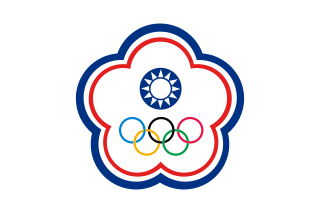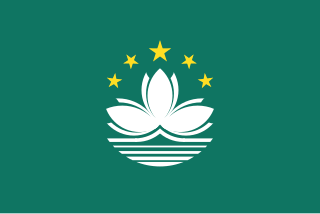
The flag of the United States of America, often referred to as the American flag, is the national flag of the United States. It consists of thirteen equal horizontal stripes of red alternating with white, with a blue rectangle in the canton bearing fifty small, white, five-pointed stars arranged in nine offset horizontal rows, where rows of six stars alternate with rows of five stars. The 50 stars on the flag represent the 50 states of the United States of America, and the 13 stripes represent the thirteen British colonies that declared independence from the Kingdom of Great Britain, and became the first states in the U.S. Nicknames for the flag include the Stars and Stripes, Old Glory, and the Star-Spangled Banner.

The current official flag of the U.S. state of Hawaii had also previously been used by the kingdom, protectorate, republic, and territory of Hawaii. The flag includes the flag of a foreign nation, the Union Jack of the United Kingdom, a remnant of the British Empire's influence on Hawaiian history.

Six Flags Entertainment Corporation, also known as Six Flags Theme Parks or simply Six Flags, is an amusement park corporation based in the United States, with properties in the US, Canada, and Mexico. It is the largest amusement park company in the world, based on the number of properties owned, and is ranked seventh in terms of attendance. The company operates twenty five properties throughout North America, including theme parks, amusement parks, water parks, and a family entertainment center. In 2017, Six Flags properties hosted 30.4 million guests.

The flag of South Korea, also known as the Taegukgi, has three parts: a white rectangular background, a red and blue Taegeuk in its center, and four black trigrams one toward each corner.

In politics, a red flag is predominantly a symbol of socialism, communism, Marxism, trade unions, left-wing politics, and historically of anarchism; it has been associated with left-wing politics since the French Revolution (1789–99). Socialists adopted the symbol during the Revolutions of 1848 and it became a symbol of communism as a result of its use by the Paris Commune of 1871. The flags of several communist states, including China, Vietnam and the Soviet Union, are explicitly based on the original red flag. The red flag is also used as a symbol by some democratic socialists and social democrats, for example the League of Social Democrats of Hong Kong, French Socialist Party and the Social Democratic Party of Germany. The Labour Party in Britain used it until the late 1980s. It was the inspiration for the socialist anthem, The Red Flag.

The National Flag Anthem of the Republic of China, also unofficially known as the "National Banner Song", is a patriotic song typically played during the raising and lowering of the flag of the Republic of China, commonly known as Taiwan. It is also played at international sporting events such as the World Baseball Classic and Olympic Games, where Taiwan participates officially under the name of Chinese Taipei. The song is thus considered to be in effect a secondary national anthem; Taiwanese citizens stand when it is performed and salute it as they would salute the national anthem.

The Chinese Eastern Railway or CER (Chinese: trad. 東清鐵路, simp. 东清铁路, Dōngqīng Tiělù; Russian: Китайско-Восточная железная дорога or КВЖД, Kitaysko-Vostochnaya Zheleznaya Doroga or KVZhD), also known as the Chinese Far East Railway and North Manchuria Railway, is the historical name for a railway across Manchuria.

The Blue Sky with a White Sun serves as the design for the party flag and emblem of the Kuomintang (KMT), the canton of the flag of the Republic of China, the national emblem of the Republic of China and as the naval jack of the ROC Navy.

The Tibetan flag, also known as the "snow lion flag", is the national flag of Tibet, adopted by the 13th Dalai Lama in 1916. Banned by the Chinese government since 1959, today the flag is used by the Tibetan Government in Exile, based in Dharamshala, India.

The Republic of China currently competes as "Chinese Taipei" at the Olympic Games. The ROC first participated at the Summer Olympic Games in 1932. After the Chinese Civil War the ROC retreated to the island of Taiwan and only Taiwan-based athletes have competed in its team since then. The ROC boycotted the Olympics starting from the 1976 Summer Games until it returned to the 1984 Winter Games, and started participating as Chinese Taipei.

Chou Tzu-yu, known mononymously as Tzuyu, is a Taiwanese singer based in South Korea and a member of the K-pop girl group Twice, under JYP Entertainment.
Pirates of the South China Coast were Chinese pirates who active throughout the South China Sea from the late 18th century to the 19th century, mainly from 1790 to 1810. Since 1805, the Pirates of the South China Coast entered the most powerful period, many pirates were fully trained by the Tây Sơn dynasty of Vietnam.
















